Caring for a dog doesn’t mean just giving him food and water – it involves a lot of things. It’s like taking care of a baby, for many many years. And it would be best if you didn’t miss out on certain things, because they can have serious consequences.
Generally speaking, corgis are a dog breed that needs a lot of care – and when we say a lot of care, we mean more than some other breeds. Why? Because they are a little bit more sensitive and prone to many different diseases.
When taking care of a corgi, you have to keep track of your regular appointments at the vet, meals, grooming, physical and mental exercise, and training. Bear in mind that taking care of any dog is not an easy job, and you must be fully prepared for all the challenges and obstacles that may arise.
Your corgi is your best friend, and it’s natural that you wish the best for him – and that’s what he deserves. So, the question is – how to take care for a corgi? Easy, by reading our article, you will get the whole idea of adequately taking care of your dog.
Keep reading, and we will go through everything – from the doctor’s appointments and tests he should take, ideas for physical exercises, to what is the best dog food for your corgi to consume.
Prepare some pen and paper – you’ll want to note down some facts!

Compulsory Health Tests
Medical tests are the most reliable source and confirmation that either something is wrong with your dog or that he is perfectly healthy. No matter what breed you choose to buy/adopt, you should have specific medical tests showing that he is in good health.
However, some breeders choose to hide information about their dogs and sell them to you without evidence that they have been tested against certain diseases and allergies. So, how do you know that you are bringing home a healthy dog, especially if he is young? How to take care for a corgi puppy?
You require confirmation that your dog is healthy. If no medical tests are showing that, you take him to the vet to get tested immediately.
The three most important health tests for the corgi breed according to the American Kennel Club are:
- Hip evaluation
- Degenerative myelopathy DNA test
- PRA genetic test or clearance via parentage
Of course, this is just scratching the surface when it comes to acquiring a full medical history, so let’s get down to listing and explaining.
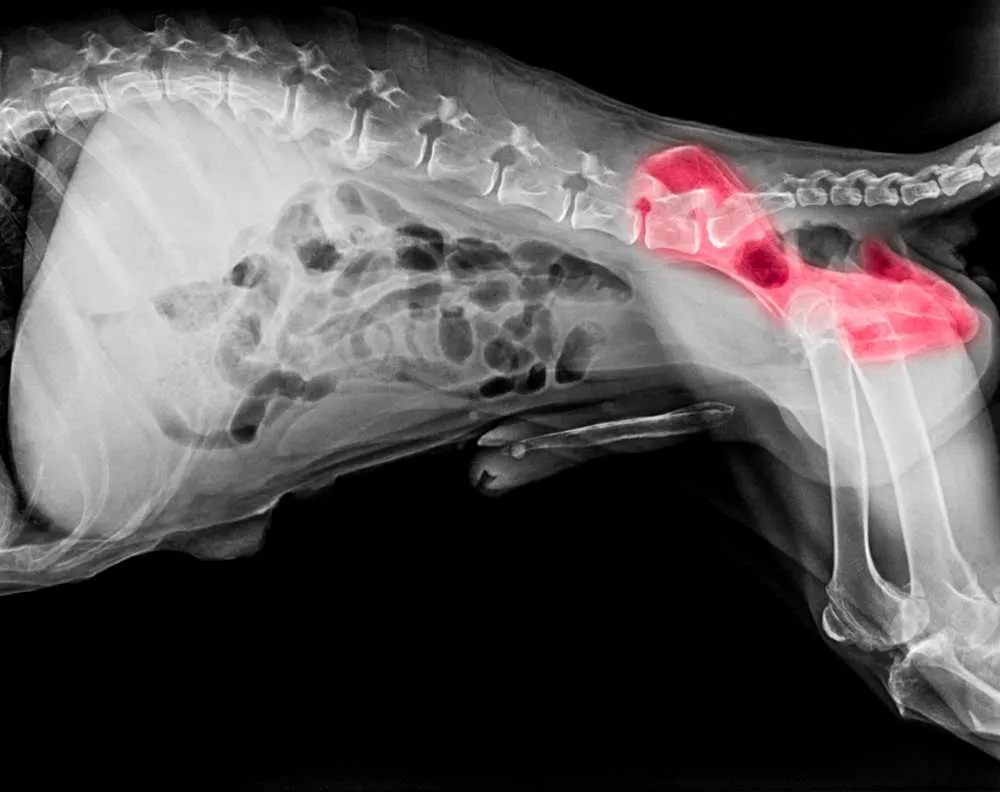
1. DIAGNOSING HIP DYSPLASIA
Hip dysplasia is among the most common orthopedic conditions in dogs. When it comes to corgis, this condition occurs with 80% of this typical breed because of their body shape. It was first recognized in the early 30s, and since then, many different environmental and genetic factors have been noted.
Suffering from hip dysplasia means that the dog’s joints haven’t adequately developed, and instead of sliding smoothly, they overlap each other. This can be very painful for the dog. How do you recognize this disease?
Something is wrong if you notice:
- Decreased activity
- Decreased range of motion
- Loss of weight in thighs
- Expressing pain through the bark
- Stiffness
- “Bunny hopping”
If this is the case, visit the vet immediately and require a hip evaluation test.
Your vet will conduct a physical examination first. This involves a thorough assessment of changes in motion, any discomfort or dysfunction. The vet will examine every part of the dog’s body, concentrating on the limbs and thighs. A physical examination can take about 30 minutes until the vet gets a clear first-hand picture of the dog’s overall condition.
After this, he might send your dog to radiographic imaging. This is an essential step in diagnosing hip dysplasia because the vet can now see the problem “from the inside”. With radiographic imaging and various X-rays, he will have a better idea of the seriousness of the disease and what steps he should take after the results have come.
Hip dysplasia progresses quickly, and you should seek help as soon as you find out. For cases that are serious and recommended for surgery, the vet will suggest the following surgeries to be done:
- Double/triple pelvic osteotomy
- Femoral head ostectomy
- Total hip replacement
Can hip dysplasia be prevented? Yes and no. While regular exercise daily largely contributes to the proper development of bones in your dog’s body, sometimes this is a genetic problem, and it can’t be prevented 100%, but it can be treated.

2. DEGENERATIVE MYELOPATHY DNA TEST
Degenerative myelopathy is a risk that occurs mostly with the Pembroke Welsh breed. Sadly, this is a genetic disease, and it can’t be avoided. Although this disease is also common with other breeds, the corgi breed is somewhat at more considerable risk because of their combined DNA.
It is a neurological disease, and it affects the white mass in the brain. After this, it spreads all the way to the spinal cord. Dogs who suffer from this lose a lot of their mass and coordination. It most likely occurs during the period of 4-14 years. It is essential to mention that although this condition may not be painful for the dog, it progresses quickly to the point where your corgi cannot walk anymore – so you should take the signs seriously.
The most common signs of this disease are:
- Difficulty walking
- Swelling
- The dog falls over quickly/problems with balance
- The dog has trouble getting up
To diagnose this, you should take a degenerative myelopathy early-onset risk modifier (corgi type). This is best to do after your corgi passes four years of age.
Thanks to genetic testing, the vet is now able to tell you if your dog is a natural carrier of this disease or if he is in no danger of it. Because the symptoms do not occur at the very beginning, you should consider getting the test before breeding your corgi – just to be safe and confident that he is not passing it to the offsprings.
Since this is most commonly a genetic issue, there is no concrete treatment that can fully cure it. The one thing you can do, however, keeps your corgi active at all times. Getting their required daily exercise is essential for them because it reflects on their overall health. Also, consider feeding him more vitamins: B, C, and E.

3. PRA GENETIC TEST/ PARENTAGE CLEARANCE
PRA stands for progressive retinal atrophy, but what is that exactly?
Progressive retinal atrophy is a disease that affects the retina, that is, the membrane that lines the back of an eye. With this happening, it usually has a diminishing effect on your corgi’s sight.
This is a tricky disease because it is connected with the dog’s DNA – mutation in his genes. It is a widespread problem among dogs, and it affects more than 100 breeds. The corgi breed, unfortunately, fits in this category.
There are types of this disease: PRA Type III, Autosomal Dominant PRA, etc.
How do you recognize that your corgi is dealing with progressive retinal atrophy?
- Your dog has night blindness, and he gets nervous at night
- Bumping into things around the house
- Loss of day vision
- Complete blindness
The next step would be diagnosing this disease, and this means a visit to the vet. Your dog will be advised to take two of the following tests:
- PRA EYE TESTING
- PRA DNA TESTING
But before doing either of these, a physical examination is a must. The vet will shine a light on your dog’s eyes to assess the seriousness of the blindness.
- PRA eye testing in dogs means that the vet examines the dog’s eye for any indication of blindness. Up until recently, this was the only way of determining whether your dog is suffering from PRA.
- On the other hand, the PRA DNA test is a much more up-to-date way of testing, including examining the DNA of your dog and the dog’s parents for indications of PRA.
Opting for these tests, you will be given the following information: whether your dog is a carrier, is he affected, and if he is clear of this disease.
Caution: you should get your dog tested for this before mating and breeding them. This is an inherited disease, so if you don’t take this into consideration, you will have to bear inevitable consequences.
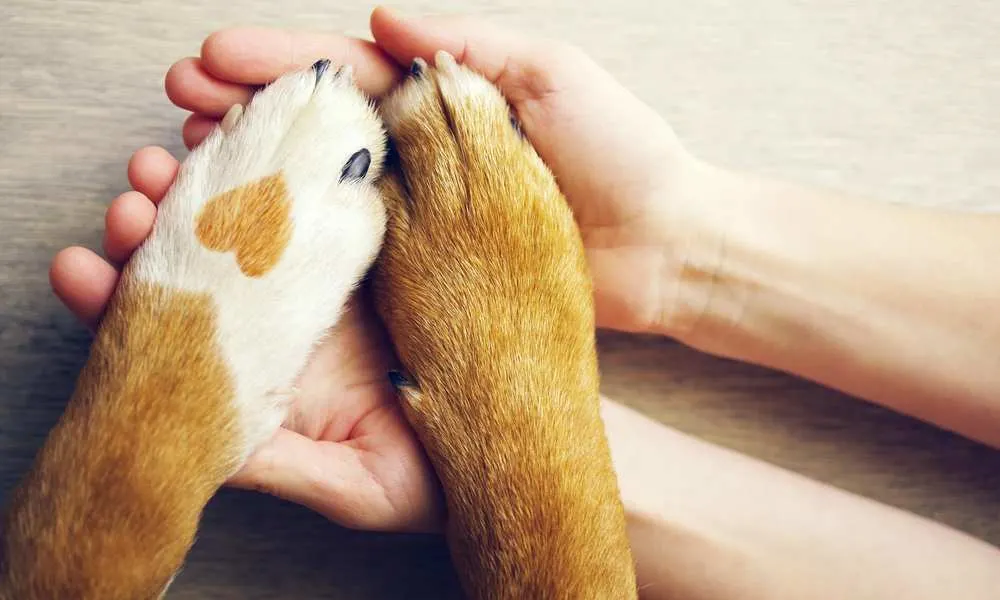
Pet Insurance
Since you are getting a dog, surely you have considered regular visits to the vet, some unpleasant coincidences happening, and your dog getting injured.
You might think, how hard are corgis to take care of? Harder if you don’t have the help of pet insurance.
What is pet insurance exactly, and how does it work? Let’s get down to explaining.
Pet insurance is a very beneficial thing for any pet owner because its job is to partially take care of the vet’s costs and keep your pet happy and healthy. Applying for the right insurance type is a life-saver, but we’ll get to that in a second.
The best part is that you don’t have to focus on just one pet. For example, if you are the owner of two cute corgis, you can insure them both. Although this might mean more papyrology, the providers often offer a discount in these situations.
No matter what your concerns are: allergies, injuries, serious diseases, inherited diseases, or just the well-being of your dog – pet insurance is a great solution.
Pet insurance works the same way regular human insurance works. What you need to do is pay a monthly premium to keep your pet “insured”.
Pet insurances differ according to what your goal is and how much you are able to afford financially. Nevertheless, you will receive a description of your chosen pet insurance conditions once you seal the deal with the provider.
Here are some of the factors that influence the type of pet insurance:
- Height and weight of the pet
- The breed
- Age
- Location
- Terms and lenght
- The company you are doing business with
The types of pet insurances and what they cover are as follows:
- WELLNESS: regular checkups, vaccines, and routine care of the dog
- ACCIDENTS-ONLY: emergency care in case of any accidents
- ACCIDENT-ILLNESS: treatments and tests
- ACCIDENT-ILLNESS WITH WELLNESS: all expected and unexpected checkups and treatments usually the most expensive type of insurance)
Now that you have read the requirements and services pet insurance provides, how do you start using pet insurance? Easy, just follow these steps:
- Buy a pet insurance policy.
- Get your pet examined and treated at the vet.
- Pay for the treatment.
- Submit a claim to an insurance provider. (depending on the company you choose)
- Get compensation for your pet’s treatment based on your insurance policy.
So, get going and insure that your corgi will get the care he needs!

Consult With A Pawlicy Advisor
What exactly is a Pawlicy Advisor? A Pawlicy (policy) Advisor is a person whose job is to assess and analyze your corgi’s health. After he does this, he looks for the appropriate type of policy for your pet, compares prices, and looks for the best option.
Why do you need this person? Are corgis easy to take care of? Well, they require more attention than some other breeds, so meeting up with a policy advisor is a smart move.
After all, better safe than sorry, right?
By consulting with a Pawlicy Advisor, you will save a considerable amount of money and avoid some problems you would have had if you did the searching on your own.
Some of the best pet insurance companies right now are:
- ASPCA Pet Health Insurance
- Pets Best
- Hartville Pet Insurance
- Pet First
By clicking on the play button below, you will learn a bit more about policy advisors.

Routine And Red Flags
Routine care for your corgi involves a number of activities you need to do on a daily basis. You shouldn’t skip any of the following “activities” if you want proper care for your dog.
Let’s list all the routine activities one by one:
- Brush your corgi’s coat once a week
- Brush your corgi’s teeth twice a week
- Keep your corgi on a healthy diet
- Include vitamins in your corgi’s meals
- Give your corgi plenty of water (because he runs around a lot)
- Exercise with your corgi
- Take your corgi for an hour walk daily
Apart from completing these routines daily, it would be best if you were on the look-out for any red flags concerning your corgi’s health. Here are some signs you should watch out for:
- Vomiting
- Weight loss/weight gain
- Lumps or bumps on the body
- Hair loss
- Coughing
- Weakness
- Difficulty to run/walk/stand for a longer time
- Redness
- Pain in the abdominal part of the body
- Itchy skin
- Drooling
- Swelling
- Sudden loss of appetite
- Scratching
- Seizures
Your corgi is really a unique breed, but are corgis easy to look after? They are famous for being too friendly, loud, sometimes reluctant to train, and very intelligent. However, they are also prone to many drawbacks in health, and that is why you should stick to a specific schedule.
Here are some characteristics which can help you look after your corgi:
Corgi dogs love to eat, and they can quickly become overweight. On the other hand, if they are sick, they will lose a lot of weight.
Corgi’s coat sheds more than once during the year, so regular grooming is a must.
Corgi dogs are herding dogs, so they like everything their way. Be careful when you leave them around small children and people he is not familiar with.
You must keep your corgi mentally and physically active 24/7. They have an outstanding amount of energy, which has to be channeled through games and outdoor activities.
Female corgis are known to be territorial, so you might notice some signs of aggression.
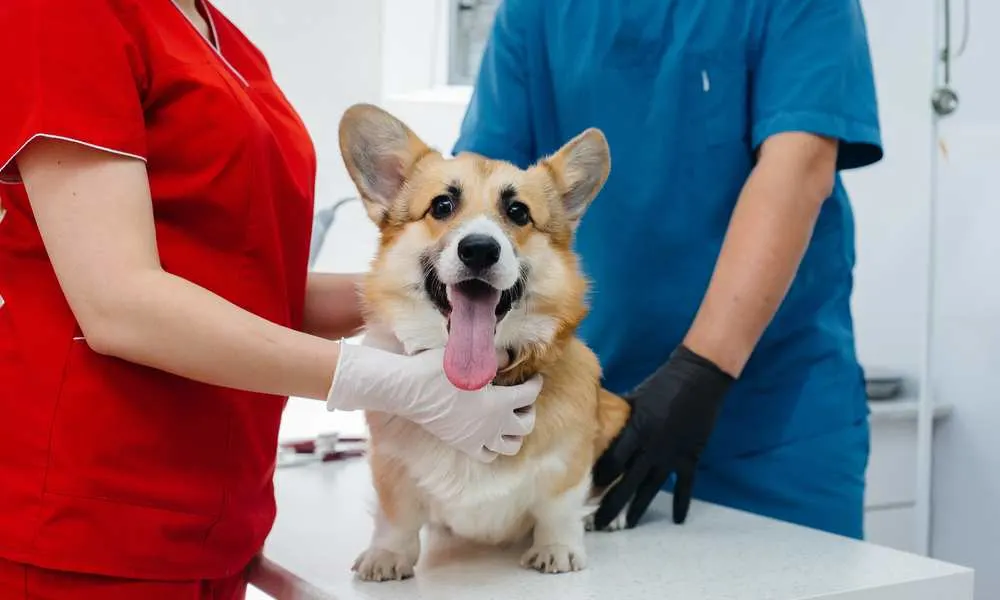
Most Common Diseases
The corgi breed is prone to many health issues during his life, and as an owner, you should be aware of all of them. Some are more serious than others, and when they are diagnosed, you must seek medical help.
In the table below are listed the most common corgi health problems:
| Hip dysplasia | As we already mentioned before, hip dysplasia is a widespread disease among the corgi breed. This is a bone abnormality that affects the dog’s joints, meaning that they don’t develop properly and give the dog difficulty while walking. This can be discovered by scanning and X-rays at the vet’s office. This condition occurs in between 4-14 years of the dog’s life. Although this disease can’t be cured, your vet can give you guidelines on how to exercise with your dog. |
| Eye conditions | At some point in their life, your dog can have trouble with his sight. An obvious sign of this is when you notice that your corgi is more clumsy than usual. The three most common eye conditions are cataracts, retinal atrophy, and progressive retinal atrophy. Cataracts occur later in life and can be surgically removed. As for retinal and progressive retinal atrophy, corgi’s vision diminishes over time, and it can lead to total blindness. The sad part is that these diseases are inherited in most cases. |
| Von Willebrand’s Disease | Von Willebrand’s disease is a problem with blood – meaning that the blood doesn’t clot properly. It is very familiar to hemophilia, and you will notice it by excessive nose bleeding, bloody stools, bleeding gums, etc. This can be discovered through a DNA test. Although there is no concrete cure for this, it can be managed by various treatments and blood transfusions. |
| Degenerative myelopathy (DM) | Degenerative myelopathy is a disorder that occurs in the corgi’s spinal cord. It affects the dog’s tissue and the lower back region. This can be very painful for the dog. Some of the symptoms of this disease are weakness and difficulty walking. It can lead to complete paralysis of the lower part of the corgi’s body in rare cases. A DNA test can also discover this. |
| Intervertebral Disc Disease (IVDD) | IVDD occurs when the dog’s vertebrae collide with the spinal cord space. This breed is prone to this disease because of its long backs and small bodies. If a corgi is suffering from this disease, he will probably have trouble standing for an extended period of time, or he is likely to fall more easily. This disease progresses quickly, and surgery is a must if you want to minimize the damage. |
| Epilepsy | A common problem for all dog breeds is epilepsy. This condition can be developed over time, or it can be inherited. You will notice that your dog has seizures. Their manner and time in which they occur differ. Over time, they will become more frequent, and your dog will have problems getting back to normal. As soon as you notice this, it would be best if you took your corgi to the vet. He will probably give him some medication. |
| Obesity | Obesity is widespread for the corgi breed. These are dogs that love to eat, and their owners love to see them chubby. But this is not always a good idea. Although your corgi needs a lot of food and vitamins to keep him healthy, there should be a limit to this. An overweight corgi will have trouble walking and breathing because of their small bodies. |
| Cutaneous Asthenia | Corgis who are suffering from cutaneous asthenia have problems with skin tissue, which becomes very fragile. This may lead to the dog having multiple blisters around the body. It can be treated with medication. |
| Cystinuria | This is a disease that results in bacteria emerging in the dog’s urine. Cystinuria that has progressed to a certain extent may lead to bladder stones in corgis, which can be extremely painful for the dog. The good news is that it can be cured. |
| Patent Ductus Arteriosus (PDA) | This is a cardiovascular disease that prevents the normal functioning of blood and lungs. This is most common for corgi puppies, and it can be treated surgically. |

Corgi Shedding
Corgi dogs fit into a dog category that sheds – a lot! They have a very thick double coat, which needs a lot of care during the year. If you have a corgi in your household, you can expect a lot of hair all over the furniture and clothes. Also, be prepared to vacuum at least twice a week – we are not kidding!
This makes you question your ability for dog care – are corgis hard to take care of? No, you just need to be persistent and stick to the routine.
Naturally, your corgi will shed once during the spring and another time during fall. If he sheds on other occasions, it might also have something to deal with his health or environmental factors.
The most common reasons behind excessive corgi shedding are:
- Change of seasons
- Poor nutrition
- Health issues
- Allergies
- Stress
- Hormonal changes
- Parasites
During the change of seasons, the shedding of your corgi’s coat will take about 2-4 weeks. However, with all the climate changes nowadays, this might be altered a bit, but in what way? Well, if your corgi appears to be highly sensitive to external factors, you might come across shedding at the change of weather. So, prepare your vacuum.
Poor nutrition is often a reason for shedding. When a dog is not given enough vitamins or is not provided with a sufficient amount of food during the day, its hair will start to fall off because of nutrient deficiency. This will result in a dull and thin coat, which is not what you want to see on any dog. So, in order to keep his coat healthy, make sure that he is getting all the vitamins and nutrients he needs.
When a dog is seriously ill, there are a lot of visible symptoms that will indicate that something is wrong. One of them is excessive shedding. When it comes to certain illnesses, you will notice that your corgi is shedding when he shouldn’t have to and that there is hair all over the house. In this case, take him to the vet immediately.
Also, if your dog has an allergic reaction to something, it can result in shedding. This might result from some food that he has been consuming but is not meant for him or that he is allergic to something in your backyard. You will never know until you go and check with the vet. Some common symptoms of allergies are sneezing, redness, inflammation, etc.
Your corgi is a breed that is known to suffer from “separation anxiety“. This is caused by insufficient devotion from the owner’s side. If you don’t spend a considerable amount of time with your corgi, he will become sadder and sadder until he falls into a state of “depression” and starts losing his hair.
Hormonal changes refer to the testosterone balance in a dog’s organism. When the levels are too high or too low, it affects the dog’s skin and coat to shed. Pregnancy is considered the primary trigger for this.
Nobody wants to hear this, but when parasites and fleas attack your dog, he will shed excessively. This can only be treated by going to the vet and buying particular products.
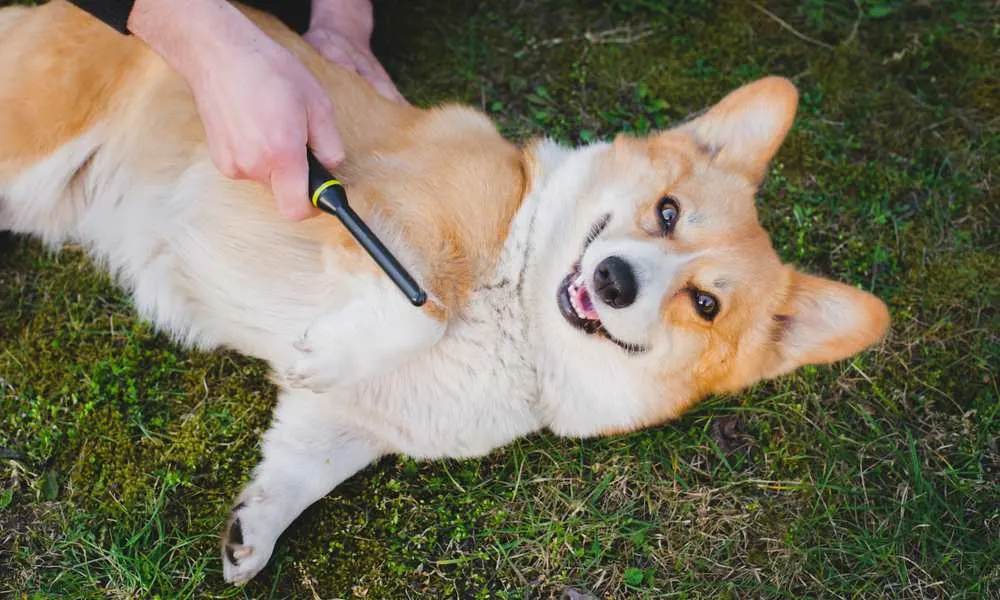
The question is:
HOW TO REDUCE SHEDDING?
There are four ways you can do this.
1. REGULAR BRUSHING
It would be best if you brushed your corgi regularly, which means going through his coat with a good brush two times a week. Some people even recommend using a conditioner afterward. The most important thing to mention here is that you shouldn’t rush this process. Pick a time during the way when you feel like you will do it nicely and slowly.
2. FREQUENT SHOWERS
Certainly, brushing helps, but you need to give your dog frequent baths as well. This ensures that his coat will be clean from all possible infections (bacteria, parasites, and fleas). Some professionals recommend bathing your dog once a week. It would also be helpful if you used some deshedding shampoos and conditioners, but nothing too much.
3. HEALTHY LIFESTYLE
A healthy lifestyle equals healthy skin and coat. This means that you are taking good care of your dog by keeping him hydrated and well-fed. They have a lot of energy, so they need good nourishment. You must include some extra vitamins in their meals if you don’t want to deal with unnecessary shedding.
4. REGULAR VISITS TO THE VET
Sometimes, shedding happens due to internal and not external factors. In this case, you need to make sure that he visits the vet regularly to see if everything is okay in his organism.
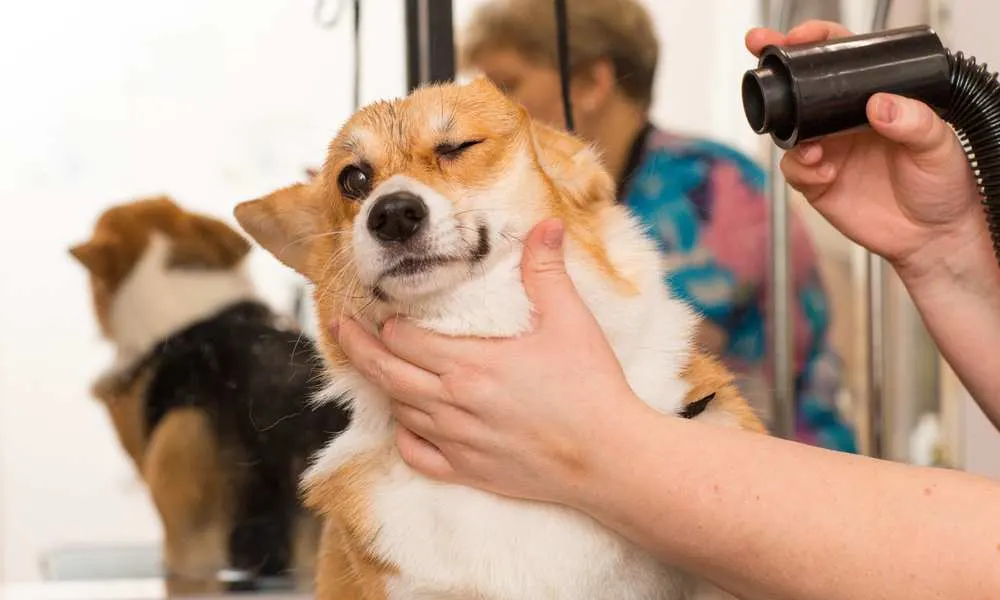
Grooming Tips
Since your corgi is gifted with a double coat, you ought to make it look good. You do this by making regular grooming appointments. Bear in mind that this also has health benefits because it eliminates old hair that might have unwanted pests.
Here are the most fashionable corgi hairstyles you can ask for at the “salon”:
| “FLUFF IT OUT” | This is perfect for corgis with long hair. It is an excellent choice because it detangles the loosened hair and makes it look smooth and voluminous. |
| “LEAVE IT NATURAL” | Some owners like to keep things natural, and this includes their dog’s hairstyle. This trend involves just regular brushing and just cutting the ends from time to time. |
| “MODEST TRIM” | This is a perfect summer hairstyle. It is just a modest trim, and it doesn’t involve a lot of hair. This will make your corgi feel more comfortable and relaxed during the hot summer days. |
Although grooming is recommended once a month, every corgi is unique, and you as an owner should know when is the right time to make another appointment. The creative part is also up to you.

Corgi Nutrition
If you want your corgi to stay healthy and have lots of energy, you need to feed him well. Corgis need to have 2-3 meals a day, including vitamins. When you go grocery shopping, look for quality dog food.
See Also: How To Feed A Corgi? How Much Food To Feed A Corgi Puppy?
Here are some popular choices:
- Rachael Ray Nutrish is at the top of our list of quality dog food, and it has a long and good tradition. It contains six primary nutrients – lamb meat, brown rice, ground rice, beef, chicken meal, and fat. It is high in protein and very good for your corgi. Also, it is gluten-free, which makes it even healthier.
- Wellness Core Natural Grain Free Dog Food will keep your dog on optimal weight. It is reduced in fat and grain-free. This is rich in turkey with potatoes, broccoli, apples, and many other vegetables. This dog food is rich in fibers.
- Orien High-Protein Dry Dog Food contains 38% protein and 18% fat. Although the base ingredient of this dog food is meat, there are a lot of vegetables included.
- Nature’s Variety Instinct Raw Boost Dog Food is intended for senior corgis. Because of this, it contains far fewer proteins and fat. This is an excellent choice for maintaining your dog’s eye health.
Learn More: How Often Do Corgis Eat? Are Corgis Always Hungry?

Training Your Corgi
Training your corgi can be an exhausting job, but you have to do it as early as possible, and you have to do it right. You can either choose to hire a professional (bear in mind that this can be costly) or try and do it yourself.
If you are determined to do this by yourself and in the comfort of your own home and backyard, you will undoubtedly need some do’s and don’ts.
Here is what you should and what you absolutely shouldn’t do when training your corgi.
| DO THIS | DON’T DO THIS |
|---|---|
| Start training your corgi while he is a puppy | Don’t leave him alone for more than 6 hours |
| Keep your corgi properly groomed | Do not make your corgi overweight |
| Reward him when he is behaving well | Never promote aggressive behavior |
| Keep him physically and mentally active | Don’t raise your voice at them |
| Make sure that their crane is clean | Do not skip on vaccines and checkups |
| Teach him new tricks from time to time | Don’t let them get too close to strangers |
These are just some of the many points you will need to master before your corgi finishes his training. For any additional information, you can take a look at some corgi training books.
Of course, no corgi training is complete without some essential equipment that should be there when you bring your pet home. Here are the “must-haves”:
- A crate: this is going to be their safe place, so you should make it feel comfortable.
- Puppy food: before officially bringing your corgi home, make sure you have full stacks of dog food prepared.
- Toys: dog toys play a very important part in their teeth development, also there are many smart toys which are very beneficial for your dog’s physical and mental activity.
- Food and water bowls: always have two or more bowls prepared. they have to be thoroughly washed and replaced from time to time.

Pre-Care Questions
Before deciding to bring home a corgi puppy, there are some questions you need to ask yourself:
- Do I have time for a dog right now?
- Do I have what it takes to train a dog?
- Do I have the financial stability to take care of a dog?
- Is my home/apartment a pet-friendly environment?
- Have I looked for pet insurance?
- How committed am I when it comes to pets?
Suppose there is a positive answer to a majority of these questions – great! You are ready to be a corgi owner!
Learn More: Are Corgis Expensive To Maintain?

Ultimate Guide For Corgi Care – Conclusion
Before deciding to buy a corgi, you should know how to care for him properly. This includes regular daily exercises, insurance policies, treating various diseases, shedding, grooming, and training, of course. Basically, a lot of things – but nothing too complicated if you are determined. So, let’s begin.
Before buying a corgi, you should make sure that he has taken some compulsory health tests. If he hasn’t, then it’s your job to make up for it and take him to the vet immediately. The three most important health tests your corgi must do are hip evaluation, degenerative myelopathy DNA test, and PRA genetic test or clearance via parentage. These diseases are inherited in many cases, so there is not much room for a definite cure, but you can treat them and prolong your corgi’s life.
Going to the vet might be costly, but you can take care of this by applying for pet insurance, This functions the same way a human one does, and you can insure more than one pet. By agreeing to this, your monthly vet’s costs will considerably be lower, and you will save tons of money – of course, your dog will be safe and healthy. There are many different types of insurance policies, and providers offer a variety of services.
A list of corgi’s health problems is not a short one, unfortunately. Some of the most common health problems he faces are hip dysplasia, retinal atrophy, epilepsy, eye conditions, cancer, etc. Some of them are more serious than others, of course, and therefore require more complex treatments and surgery. In order to notice those diseases, you must keep one eye open at all times and pay attention to any changes in your dog’s behavior or appearance. Some of the most common indicators that something is wrong are swelling, redness, rashes, pain in the abdominal area, excessive shedding, barking, difficulty walking, etc.
Corgis have a double coat, and it sheds a lot during the year. To be more precise, it naturally happens two times – in the spring and fall. However, your corgi will shed excessively when something is wrong with his health. This involves shedding more frequently, and the result is a dry and thin coat. If you want to avoid this problem successfully, you should groom him regularly, give him more frequent baths and of course, take him to the vet.
Your corgi should be fed 2-3 times a day with some good nutrients and vitamins. When you are buying dog food, look for high-quality ones. Some of the best choices are: Rachael Ray Nutrish, Wellness Core Natural Grain Free Dog Food, Orien High-Protein Dry Dog Food, and Nature’s Variety Instinct Raw Boost Dog Food.
Corgi grooming can be fun for the owner because their long and thick coat allows them to choose between different hairstyles. You can opt for a modest trim, a fancy look, or you can just keep it natural.
Training is a very delicate and important topic when it comes to corgis. They are a unique breed and require special training methods. You can train them by yourself, or you can hire a professional to do it for you. If you decide to do it yourself, there are some do’s and don’ts you should have in mind, like rewarding them for good behavior, not leaving them alone for too long, keeping them mentally and physically active, etc. The most important thing is that you should stay focused and consistent.
Before thinking of getting a dog, you should ask yourself some pre-care questions: are you ready to take care of a pet, are you financially stable, is your home pet-friendly, etc. If the answer is yes – congratulations – you are ready to be a proud corgi owner!

